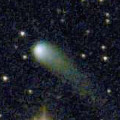
|
Now it is 10.8 mag (Nov. 23, Marco Goiato). It is expected to brighten up to 8 mag in 2020. It stays observable in good condition for a long time in the Northern Hemisphere. In the Southern Hemisphere, it will be unobservable soon. Then it is not observable until July.
Date(TT) R.A. (2000) Decl. Delta r Elong. m1 Best Time(A, h)
Nov. 23 5 12.10 43 14.6 1.740 2.650 151 10.2 1:08 (180, 82)
Nov. 30 4 58.50 45 56.3 1.660 2.585 154 10.0 0:27 (180, 79)
|

|
Now it is 11.2 mag (Nov. 18, Juan Jose Gonzalez). It stays bright as 11 mag until winter. It stays observable in good condition for a long time in the Northern Hemisphere. In the Southern Hemisphere, it will be unobservable soon. Then it will never be observable again.
Date(TT) R.A. (2000) Decl. Delta r Elong. m1 Best Time(A, h)
Nov. 23 23 59.93 39 6.7 2.430 3.127 127 11.4 19:51 (180, 86)
Nov. 30 23 50.13 39 9.6 2.515 3.130 120 11.5 19:14 (180, 86)
|
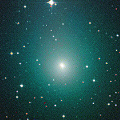
|
It brightened up to 8.3 mag in September (Sept. 20, Maik Meyer). Now it is fading. It has already faded down to 13.1 mag (Nov. 19, Chris Wyatt). In the Southern Hemisphere, it stays observable for a long time after this. In the Northern Hemisphere, it will be unobservable in early December.
Date(TT) R.A. (2000) Decl. Delta r Elong. m1 Best Time(A, h)
Nov. 23 21 34.80 -43 19.3 1.838 1.820 73 12.6 18:19 ( 9, 11)
Nov. 30 21 37.03 -44 7.1 2.021 1.877 67 12.9 18:18 ( 14, 9)
|
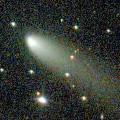
|
Now it is 11.7 mag (Nov. 4, Sandor Szabo). It will fade out rapidly after this. It is observable in excellent condition in the Northern Hemisphere. It stays locating extremely low in the Southern Hemisphere.
Date(TT) R.A. (2000) Decl. Delta r Elong. m1 Best Time(A, h)
Nov. 23 2 24.27 49 33.8 0.721 1.635 145 13.1 22:16 (180, 75)
Nov. 30 2 23.56 48 42.8 0.771 1.673 144 13.5 21:48 (180, 76)
|

|
Now it is 14.7 mag (Nov. 19, Chris Wyatt).
Date(TT) R.A. (2000) Decl. Delta r Elong. m1 Best Time(A, h)
Nov. 23 0 25.89 13 26.8 5.090 5.780 130 13.2 20:18 ( 0, 69)
Nov. 30 0 25.16 13 13.3 5.180 5.780 123 13.3 19:50 ( 0, 68)
|
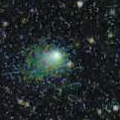
|
Now it is 13.9 mag (Oct. 26, Toshihiko Ikemura, Hirohisa Sato). It will be fading slowly after this.
Date(TT) R.A. (2000) Decl. Delta r Elong. m1 Best Time(A, h)
Nov. 23 20 28.93 -15 32.5 1.966 1.800 65 14.1 18:19 ( 34, 32)
Nov. 30 20 47.62 -15 4.0 2.025 1.807 63 14.2 18:18 ( 36, 32)
|

|
Now it is 14.7 mag (Nov. 19, Chris Wyatt). It will be fading slowly after this. In the Southern Hemisphere, it becomes low from February to March, but it stays observable for a long time. In the Northern Hemisphere, it is not observasble until summer in 2020.
Date(TT) R.A. (2000) Decl. Delta r Elong. m1 Best Time(A, h)
Nov. 23 20 54.32 -74 40.8 3.492 3.233 66 14.6 18:19 ( 6,-20)
Nov. 30 21 11.90 -71 43.5 3.562 3.255 64 14.6 18:18 ( 8,-18)
|
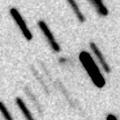
|
Now it is 15.3 mag (Nov. 5, Katsumi Yoshimoto). It brightens up to 14 mag in winter. It is observable in excellent condition in the Northern Hemisphere. It locates low in the Southern Hemisphere.
Date(TT) R.A. (2000) Decl. Delta r Elong. m1 Best Time(A, h)
Nov. 23 2 11.79 41 9.5 0.734 1.665 150 14.8 22:04 (180, 84)
Nov. 30 2 12.77 38 34.5 0.724 1.644 147 14.6 21:37 (180, 87)
|
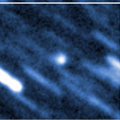
|
Now it is 14.8 mag (Oct. 30, Toshihiko Ikemura, Hirohisa Sato). It stays at 14.5-15 mag until December. It is observable in good condition in the Southern Hemisphere. It locates somewhat low in the Northern Hemisphere.
Date(TT) R.A. (2000) Decl. Delta r Elong. m1 Best Time(A, h)
Nov. 23 20 46.69 -15 50.6 1.874 1.789 69 14.7 18:19 ( 29, 34)
Nov. 30 21 2.17 -13 55.6 1.930 1.787 66 14.7 18:18 ( 33, 35)
|
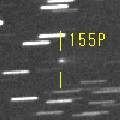
|
Now it is 15.4 mag (Nov. 1, Toshihiko Ikemura, Hirohisa Sato). It is observable at 14.5 mag in good condition in winter. It locates somewhat low in the Southern Hemisphere.
Date(TT) R.A. (2000) Decl. Delta r Elong. m1 Best Time(A, h)
Nov. 23 10 9.03 14 5.0 1.494 1.804 90 14.9 5:13 (328, 66)
Nov. 30 10 23.16 13 23.9 1.441 1.809 94 14.8 5:18 (340, 67)
|

|
Now it is 16.3 mag (Nov. 2, Toshihiko Ikemura, Hirohisa Sato). It is fainter than this ephemeris recently.
Date(TT) R.A. (2000) Decl. Delta r Elong. m1 Best Time(A, h)
Nov. 23 9 34.16 7 2.2 2.406 2.703 96 14.9 5:13 (352, 62)
Nov. 30 9 37.29 6 29.5 2.344 2.735 102 15.0 5:04 ( 0, 61)
|

|
It brightened up to 7.7 mag in June in 2018 (June 19, Juan Jose Gonzalez). Now it is fading. It has already faded down to 15.1 mag (Nov. 6, Toshihiko Ikemura, Hirohisa Sato). In the Southern Hemisphere, it stays observable for a long time until the comet will fade out. In the Northern Hemisphere, it stays low for a while.
Date(TT) R.A. (2000) Decl. Delta r Elong. m1 Best Time(A, h)
Nov. 23 6 39.94 -34 35.4 4.857 5.310 112 14.9 2:35 ( 0, 20)
Nov. 30 6 33.69 -34 35.6 4.864 5.366 115 14.9 2:01 ( 0, 20)
|
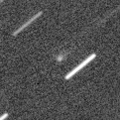
|
Now it is 15.6 mag (Nov. 6, Toshihiko Ikemura, Hirohisa Sato). The orbit is extremely hyperbolic with e=3.35. It is the first interstellar comet in history. It brightens up to 15 mag in December. In the Northern Hemisphere, it stays observable in good condition until early December. Then it will be getting lower, and it will be unobservable in mid January. In the Southern Hemisphere, it will be getting higher gradually. Then it will be observable in excellent condition.
Date(TT) R.A. (2000) Decl. Delta r Elong. m1 Best Time(A, h)
Nov. 23 11 1.87 -6 39.3 2.125 2.036 71 15.2 5:13 (325, 42)
Nov. 30 11 13.90 -11 48.7 2.057 2.016 73 15.1 5:18 (334, 39)
|
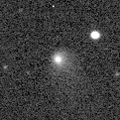
|
Now it is 14.7 mag (Nov. 19, Chris Wyatt). In the Southern Hemisphere, it is observable for a long time. It stays low in the Northern Hemisphere.
Date(TT) R.A. (2000) Decl. Delta r Elong. m1 Best Time(A, h)
Nov. 23 22 51.89 -32 38.1 4.532 4.657 91 15.3 18:44 ( 0, 23)
Nov. 30 22 52.78 -31 12.0 4.665 4.688 85 15.3 18:18 ( 0, 24)
|

|
In the Southern Hemisphere, it is observable at 14.5 mag from winter to spring. In the Northern Hemisphere, it is not observable until August when it fades down to 17 mag.
Date(TT) R.A. (2000) Decl. Delta r Elong. m1 Best Time(A, h)
Nov. 23 15 59.79 -55 45.2 2.968 2.240 35 15.4 18:19 ( 41,-32)
Nov. 30 16 13.48 -57 56.8 2.919 2.205 36 15.3 5:18 (322,-32)
|
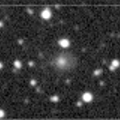
|
Now it is 15.0 mag (July 21, Taras Prystavski). It stays 16 mag for a long time from 2019 to 2020. It stays observable for a long time in the Southern Hemisphere. It is hardly observable in the Northern Hemisphere.
Date(TT) R.A. (2000) Decl. Delta r Elong. m1 Best Time(A, h)
Nov. 23 13 25.84 -79 3.4 3.807 3.441 61 15.8 5:13 (349,-29)
Nov. 30 13 58.50 -81 37.8 3.795 3.440 61 15.8 5:18 (351,-31)
|
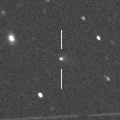
|
Now it is 14.8 mag (Nov. 4, Sandor Szabo). It stays 15-16 mag until December, and it is observable in good condition.
Date(TT) R.A. (2000) Decl. Delta r Elong. m1 Best Time(A, h)
Nov. 23 23 49.54 -8 18.6 1.806 2.385 113 15.8 19:42 ( 0, 47)
Nov. 30 23 54.15 -7 34.1 1.873 2.375 108 15.9 19:19 ( 0, 48)
|

|
Now it is 14.8 mag (Aug. 28, Chris Wyatt). It will be fading slowly after this. In the Southern Hemisphere, it stays observable in good condition for a long time, although it becomes low from October to November. It will never be observable after this in the Northern Hemisphere.
Date(TT) R.A. (2000) Decl. Delta r Elong. m1 Best Time(A, h)
Nov. 23 14 17.05 -53 46.3 5.069 4.336 38 15.9 5:13 (323,-20)
Nov. 30 14 20.89 -55 5.6 5.080 4.377 40 15.9 5:18 (327,-17)
|

|
It brighted rapidly from 20.5 mag up to 18.5 mag in September. However, the brightness evolution has stopped since October. Now it is very faint as 18.9 mag (Nov. 21, Katsumi Yoshimoto). It will approaches to Earth down to 0.09 a.u. in early January. It will be obesrvable in excellent condition in the Northern Hemisphere. If it is as bright as in 2003, it will be 17.5 mag at best. But if it shows cometary activity, it may brighten up to 13.5 mag. In the Southern Hemisphere, it will not be observable at the high light.
Date(TT) R.A. (2000) Decl. Delta r Elong. m1 Best Time(A, h)
Nov. 23 22 24.79 -19 14.8 0.313 1.040 90 16.3 18:19 ( 0, 36)
Nov. 30 22 29.62 -16 25.6 0.280 1.006 85 16.0 18:18 ( 7, 39)
|

|
It has not been observed yet in this apparition. Now it is fainter than 21.5 mag (Aug. 4, Erwin Schwab). It was expected to brighten up to 12 mag from August to September. But actually, it must be much fainter than expected. It is observable in good condition in the Northern Hemisphere. It is not observable in the Southern Hemisphere.
Date(TT) R.A. (2000) Decl. Delta r Elong. m1 Best Time(A, h)
Nov. 23 7 35.68 60 37.7 1.078 1.824 123 16.2 3:31 (180, 64)
Nov. 30 7 28.39 61 40.6 1.089 1.871 128 16.8 2:57 (180, 63)
|

|
Now it is 16.2 mag (Oct. 25, Thomas Lehmann). It is expected to be observable at 5-6 mag for a long time from 2022 to 2023. In the Northern Hemisphere, it is not observable at the high light from 2022 summer to 2023 summer. In the Southern Hemisphere, it stays unobservable for a while. But it will be observable in good condition at the high light.
Date(TT) R.A. (2000) Decl. Delta r Elong. m1 Best Time(A, h)
Nov. 23 17 28.57 46 31.5 10.683 10.390 70 16.3 18:19 (126, 34)
Nov. 30 17 32.17 46 10.6 10.645 10.342 69 16.3 18:18 (127, 31)
|

|
Now it is 17.4 mag (Nov. 3, Toshihiko Ikemura, Hirohisa Sato). It will brighten up to 13.5-14 mag from 2020 to 2021. It stays observable in good condition for a long time after this until 2020 summer.
Date(TT) R.A. (2000) Decl. Delta r Elong. m1 Best Time(A, h)
Nov. 23 12 25.92 12 55.9 4.037 3.653 60 16.4 5:13 (286, 42)
Nov. 30 12 33.04 12 31.3 3.930 3.635 65 16.3 5:18 (292, 47)
|

|
Now it is 15.3 mag (Nov. 4, Sandor Szabo). It is observable at 16 mag in good condition from October to November.
Date(TT) R.A. (2000) Decl. Delta r Elong. m1 Best Time(A, h)
Nov. 23 2 23.78 -1 1.3 1.709 2.610 149 16.3 22:13 ( 0, 54)
Nov. 30 2 1.05 -3 14.9 1.825 2.639 137 16.5 21:24 ( 0, 52)
|

|
Now it is 16.7 mag (Nov. 1, Ken-ichi Kadota). It will brighten up to 10.5 mag from 2020 December to 2021 January. In the Northern Hemisphere, it stays observable in good condition while the comet will be brightening gradually, but it is not observable at the high light. In the Southern Hemisphere, it is not observable for a long time, but it will be observable in good condition after the high light.
Date(TT) R.A. (2000) Decl. Delta r Elong. m1 Best Time(A, h)
Nov. 23 17 4.33 62 56.7 4.603 4.612 84 16.5 18:19 (147, 35)
Nov. 30 17 12.05 62 9.1 4.540 4.549 84 16.4 18:18 (146, 33)
|

|
It stays 16-17 mag for a long time until 2020. It is observable in good condition in the Northern Hemisphere. It is hardly observable in the Southern Hemisphere.
Date(TT) R.A. (2000) Decl. Delta r Elong. m1 Best Time(A, h)
Nov. 23 13 8.20 51 40.9 8.706 8.594 80 16.9 5:13 (229, 46)
Nov. 30 13 12.56 51 43.3 8.648 8.602 84 16.9 5:18 (229, 51)
|

|
Fading. Now it is 17.3 mag (Nov. 1, Toshihiko Ikemura, Hirohisa Sato). It stays 17 mag from autumn to winter. It is observable in good condition in the Northern Hemisphere. It locates low in the Southern Hemisphere.
Date(TT) R.A. (2000) Decl. Delta r Elong. m1 Best Time(A, h)
Nov. 23 9 12.58 23 40.0 6.182 6.532 106 16.9 5:07 ( 0, 79)
Nov. 30 9 9.11 23 39.8 6.108 6.576 114 16.9 4:36 ( 0, 79)
|

|
Now it is 17.1 mag (Oct. 31, Toshihiko Ikemura, Hirohisa Sato). It will be fading after this, and it will be fainter than 18 mag in late December.
Date(TT) R.A. (2000) Decl. Delta r Elong. m1 Best Time(A, h)
Nov. 23 3 17.72 27 3.3 1.365 2.343 169 16.9 23:09 ( 0, 82)
Nov. 30 3 12.50 26 20.0 1.407 2.369 163 17.2 22:36 ( 0, 81)
|

|
Now it is 16.4 mag (Oct. 30, Toshihiko Ikemura, Hirohisa Sato). It stays observable in good condition while the comet will be fading slowly after this.
Date(TT) R.A. (2000) Decl. Delta r Elong. m1 Best Time(A, h)
Nov. 23 3 15.14 -1 54.8 1.773 2.706 156 17.1 23:06 ( 0, 53)
Nov. 30 3 12.29 -2 3.1 1.854 2.758 150 17.3 22:36 ( 0, 53)
|
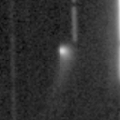
|
Now it is 17.7 mag (Oct. 31, Toshihiko Ikemura, Hirohisa Sato). It will be fading after this. In the Northern Hemisphere, it stays observable in good condition for a long time. In the Southern Hemisphere, it stays extremely low for a long time.
Date(TT) R.A. (2000) Decl. Delta r Elong. m1 Best Time(A, h)
Nov. 23 1 28.13 37 39.9 3.530 4.370 144 17.1 21:19 (180, 87)
Nov. 30 1 19.27 35 33.8 3.629 4.411 137 17.2 20:43 (180, 89)
|

|
Fading now. Now it is 17.1 mag (Oct. 5, M. Masek). In the Southern Hemisphere, it stays observable for a long time until it fades out. In the Northern Hemisphere, it will not be observable after this.
Date(TT) R.A. (2000) Decl. Delta r Elong. m1 Best Time(A, h)
Nov. 23 5 57.83 -53 40.9 5.165 5.446 101 17.4 1:53 ( 0, 1)
Nov. 30 5 47.02 -54 35.6 5.212 5.498 101 17.4 1:14 ( 0, 0)
|
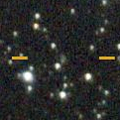
|
Now it is 17.3 mag (Oct. 26, Toshihiko Ikemura, Hirohisa Sato). It will brighten up to 12 mag in winter in 2022.
Date(TT) R.A. (2000) Decl. Delta r Elong. m1 Best Time(A, h)
Nov. 23 22 2.41 43 0.1 7.071 7.396 105 17.4 18:19 (152, 81)
Nov. 30 22 3.82 42 29.0 7.095 7.351 101 17.4 18:18 (132, 78)
|
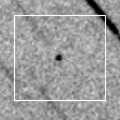
|
Now it is 16.3 mag (Oct. 8. ATLAS-HKO, Haleakala). It passed the perihelion on July 2. Then it must have brightened up to 13 mag, but it was not observable around that time. In the Northern Hemisphere, it stays observable in excellent condition until December when it becomes fainter than 18 mag. In the Southern Hemisphere, it stays locating low.
Date(TT) R.A. (2000) Decl. Delta r Elong. m1 Best Time(A, h)
Nov. 23 0 20.99 32 47.9 1.273 2.066 131 17.4 20:13 ( 0, 88)
Nov. 30 0 17.59 30 5.4 1.379 2.106 125 17.7 19:42 ( 0, 85)
|
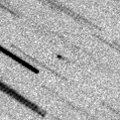
|
First return of a new periodic comet which brightened up to 18 mag in 2014. Now it is 17.2 mag (Nov. 1, Toshihiko Ikemura, Hirohisa Sato). It will be fainter than 18 mag in December. It is observable in good condition in the Northern Hemisphere. It locates extremely low in the Southern Hemisphere.
Date(TT) R.A. (2000) Decl. Delta r Elong. m1 Best Time(A, h)
Nov. 23 8 11.10 43 57.6 0.390 1.238 121 17.5 4:06 (180, 81)
Nov. 30 8 11.35 44 0.3 0.407 1.277 127 17.6 3:39 (180, 81)
|
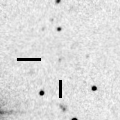
|
Now it is 17.4 mag (Oct. 31, Ken-ichi Kadota). It is observable at 17-18 mag for a long time from late 2019 to early 2021. It will fade out before it passes the perihelion.
Date(TT) R.A. (2000) Decl. Delta r Elong. m1 Best Time(A, h)
Nov. 23 3 6.88 0 34.8 4.234 5.160 157 17.5 22:58 ( 0, 56)
Nov. 30 3 3.36 0 35.4 4.257 5.147 151 17.5 22:27 ( 0, 56)
|

|
Now it is 17.8 mag (Nov. 2, Toshihiko Ikemura, Hirohisa Sato). It was exptected to brighten up to 16.5 mag from October to December. But actually, it is fainter than originally expected. It seems to brighten up to 18 mag at best. It is observable in good condition in the Northern Hemisphere. It locates low in the Southern Hemisphere.
Date(TT) R.A. (2000) Decl. Delta r Elong. m1 Best Time(A, h)
Nov. 23 9 25.86 28 35.8 1.065 1.628 104 17.8 5:13 (346, 83)
Nov. 30 9 41.62 31 26.1 1.027 1.642 109 17.8 5:08 ( 0, 86)
|
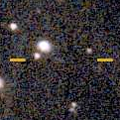
|
Now it is 17.9 mag (Oct. 29, Toshihiko Ikemura, Hirohisa Sato). It is observable at 18 mag in good condition in winter. It locates somewhat low in the Southern Hemisphere.
Date(TT) R.A. (2000) Decl. Delta r Elong. m1 Best Time(A, h)
Nov. 23 4 19.73 24 30.8 2.266 3.247 172 17.8 0:15 ( 0, 80)
Nov. 30 4 14.77 24 15.0 2.256 3.241 176 17.8 23:38 ( 0, 79)
|
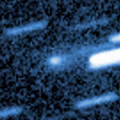
|
It brightened up to 16 mag in September. Now it is fading. Now it is 17.1 mag (Nov. 1, Toshihiko Ikemura, Hirohisa Sato). It will be fainter than 18 mag in December.
Date(TT) R.A. (2000) Decl. Delta r Elong. m1 Best Time(A, h)
Nov. 23 10 33.28 1 48.9 1.434 1.608 80 17.9 5:13 (328, 52)
Nov. 30 10 42.47 0 2.4 1.421 1.660 85 18.1 5:18 (339, 53)
|
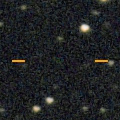
|
Now it is very faint as 19.7 mag (Oct. 25, Toshihiko Ikemura, Hirohisa Sato). It brightened up to 15.5 mag in 1997, and 17 mag in 2008, however, it is much fainter in this apparition.
Date(TT) R.A. (2000) Decl. Delta r Elong. m1 Best Time(A, h)
Nov. 23 1 5.48 13 57.8 2.542 3.358 139 20.3 20:57 ( 0, 69)
Nov. 30 1 5.09 13 23.4 2.618 3.366 132 20.4 20:29 ( 0, 68)
|
|
![]()
 168P/Hergenrother
168P/Hergenrother C/2017 K2 ( PanSTARRS )
C/2017 K2 ( PanSTARRS ) 246P/NEAT
246P/NEAT C/2018 DO4 ( Lemmon )
C/2018 DO4 ( Lemmon ) C/2019 N1 ( ATLAS )
C/2019 N1 ( ATLAS ) C/2010 U3 ( Boattini )
C/2010 U3 ( Boattini ) C/2015 O1 ( PanSTARRS )
C/2015 O1 ( PanSTARRS ) 261P/Larson
261P/Larson C/2019 K5 ( Young )
C/2019 K5 ( Young ) C/2018 A3 ( ATLAS )
C/2018 A3 ( ATLAS ) C/2016 N6 ( PanSTARRS )
C/2016 N6 ( PanSTARRS ) C/2019 L3 ( ATLAS )
C/2019 L3 ( ATLAS ) (3200) Phaethon
(3200) Phaethon 384P/2019 O1 ( Kowalski )
384P/2019 O1 ( Kowalski ) 173P/Mueller 5
173P/Mueller 5 76P/West-Kohoutek-Ikemura
76P/West-Kohoutek-Ikemura 203P/Korlevic
203P/Korlevic 387P/2019 R1 ( Boattini )
387P/2019 R1 ( Boattini ) 200P/Larsen
200P/Larsen![]()



































